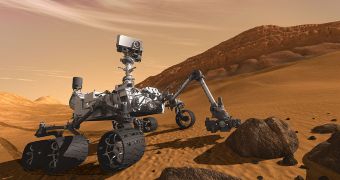Astrobiologists really want to find life on Mars. A group of 20 experts, led by Washington State University scientist Dirk Schulze-Makuch propose a new mission to the Red Planet, with the express purpose of searching for signs of past and/or present lifeforms.
The mission, dubbed Biological Oxidant and Life Detection (BOLD), would feature “a strong and comprehensive life detection component.” Details of how it would be set up appear in a paper signed by the 20 scientists, and published in the latest issue of the journal Planetary and Space Science.
One of the things that would separate this mission from others conducted on the surface, or in the orbit, of Mars is the fact that its main component would be a small fleet of sensor packages that would be inserted into the Martian soil directly.
These assets would be able to conduct a wide series of tests and investigations on the regolith, and finally reveal whether conditions have ever been ripe enough on Mars for the planet to support life.
“We really want to address the big questions on Mars and not fiddle around. With the money for space exploration drying up, we finally have to get some exciting results that not only the experts and scientists in the field are interested in but that the public is interested too,” the team leader explains.
The proposal comes at a time when the American space agency is reevaluating the budget it is willing to allot to planetary exploration. Under the NASA FY2013 budget proposal, this division could lose up to 20 percent of its current funding levels.
Such a cut would essentially place severe restrictions on the development of new missions. Most likely, NASA will not start working on any flagship-class exploration spacecraft for the foreseeable future. However, the FY2013 proposal does feature funds for the MAVEN orbiter, to be launched next year.
The new proposal calls for BOLD to be made up of six individual probes, each weighing as little as 59 kilograms (130 pounds). These components would be shaped like inverted pyramids, and would be deployed via parachutes.
Upon landing, the science instruments at their tips would penetrate up to 30 centimeters (one foot) into Martian regolith, a depth sufficient enough to conduct accurate scientific measurements, Astrobiology Magazine reports.

 14 DAY TRIAL //
14 DAY TRIAL //